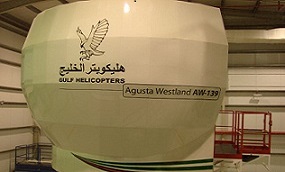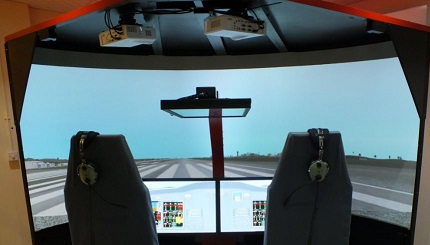Gulf Helicopter’s Training Academy is fully committed for providing the best in-service and cost-efficient solutions to all customers. Our full-flight simulators built on modern technology and Procedural Trainer enhance the effectiveness of the training and reduce impact on the use of real aircraft:

Systems Management.
Initial Type Rating.
Recurrent and Checking.
Instrument Rating, revalidation and renewal.
Recency.
Crew Resource Management (CRM).
Line Oriented Flight Training (LOFT).
Multi-Crew Cooperation (MCC).
Type Training Testing and Checking.

Type Rating Training and Testing including:
VFR / IFR Training. Emergency training including CAT A Operations. Systems Management, including Emergencies.Multi Crew Cooperation (MCC) Training.
Recurrent / Refresh Training.
Line-oriented Flight Training (LOFT).
Mission Training to include:
Search and Rescue (SAR). Hoist and Sling Load Operations. Offshore Environment together with oil rigs and ships. Night flying. Night Vision goggle (NVG) training. Confined area procedures. Day/night transit flight. Crew reaction in deteriorating conditions, such as meteorological conditions and low fuel. Platform and rooftop landings. Inadvertent entry into instrument meteorological conditions (IMC).
Cockpit familiarization.
Cockpit pre-start checks.
Comms Management.
Autopilot basic and upper mode functionality.
FMS, RMS and display symbology familiarization.
Engines management procedures.
Avionics malfunctions identification.
Systems malfunction procedures (electrical, engines, hydraulics, fuel and transmission).
Normal and emergency procedures (related to the cockpit instruments operations).
Procedural IFR operations.

Systems Management.
Initial Type Rating.
Recurrent and Checking.
Instrument Rating, revalidation and renewal.
Recency.
Crew Resource Management (CRM).
Line Oriented Flight Training (LOFT).
Multi-Crew Cooperation (MCC).
Type Training Testing and Checking.

Type Rating Training and Testing including:
VFR / IFR Training. Emergency training including CAT A Operations. Systems Management, including Emergencies.Multi Crew Cooperation (MCC) Training.
Recurrent / Refresh Training.
Line-oriented Flight Training (LOFT).
Mission Training to include:
Search and Rescue (SAR). Hoist and Sling Load Operations. Offshore Environment together with oil rigs and ships. Night flying. Night Vision goggle (NVG) training. Confined area procedures. Day/night transit flight. Crew reaction in deteriorating conditions, such as meteorological conditions and low fuel. Platform and rooftop landings. Inadvertent entry into instrument meteorological conditions (IMC).
Cockpit familiarization.
Cockpit pre-start checks.
Comms Management.
Autopilot basic and upper mode functionality.
FMS, RMS and display symbology familiarization.
Engines management procedures.
Avionics malfunctions identification.
Systems malfunction procedures (electrical, engines, hydraulics, fuel and transmission).
Normal and emergency procedures (related to the cockpit instruments operations).
Procedural IFR operations.